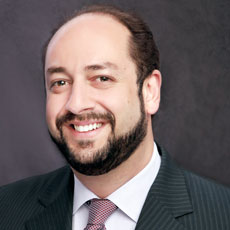
If the oral health of your LTC clients is reflective of national trends, they are probably facing challenges that can be causing daily pain, discomfort, difficulty eating or be lending themselves to systemic diseases such as aspiration pneumonia and diabetes—both major concerns for LTC clients. This applies not only to the elderly, where studies show problems of epidemic proportions, but also for LTC clients or residents who may have trouble taking care of their own teeth and have problems getting transport to a regular dental cleaning and examination at a distant dental office.
From plaque buildup and inflammation to cavities, dry mouth and periodontal disease, having professional dental intervention at regular intervals is crucial to a healthier and better quality of life for LTC clients.
To begin, are your residents regularly seeing a dental hygienist or dentist?
Most likely not, based on national data. There are a range of reasons, key among them the difficulty to arrange transportation, but also a perception that “if there is no pain, there is no problem.” Nurses on site at SNFs or LTCFs may have the responsibility for oral health and studies have shown that increased education of nurses in dental care issues does have positive effects in improvement of dental care.
Increased direct access for dental hygienists combined with teledentistry technologies create an opportunity for more direct dental professional care on-site, live training of nursing staff in dental care and connecting to clinical expertise from home-based or facility settings.
Meeting needs in LTC with teledentistry
Teledentistry brings these key benefits to residents in long-term care settings:
- Makes it possible in a growing number of states for hygienists to be sent from a dental office (or independently) to provide initial dental screenings and preventive hygiene services.
- Your LTC clients can have exam details and images sent from your LTC setting to a remote dentist for an oral evaluation and treatment planning, saving an extra trip to the office. (Allowed settings are vary by state but typically include nursing homes and other LTC settings).
- A skilled nurse in charge of care can conveniently reach out to get dental clinical input on the condition of a client.
- If you state requires an Advisory Dentist, the they can now provide nursing staff education and training more conveniently. Even if not a state requirement, your facility can more cost-effectively arrange for a dentist to have beneficial input.
- It means a remote general dentist or specialist can have (in some states) live video consultations with your LTC clients.
How teledentistry will be deployed to improve oral health for your clients is dependent on unique state-by-state regulations. Here are some potential scenarios:
- You contact a local dental office and suggest a teledentistry solution such as TeleDent by MouthWatch, which will allow them to connect their hygienists with the dentist while on site at your senior care facility. The team arrives once a month and can see residents for cleanings and care education. Exam details, X-rays and intraoral images are captured and later shared with the supervising dentist. Your facility or resident family members are contacted about any concerns that require an in-office appointment.
- You hire an independent RDH (dependent on state) who contracts with dentists for needed treatments and uses a teledentistry solution to communicate with them.
- You speak with your Advisory Dentist about incorporating technology that will allow you to offer real-time or asynchronous consultations for urgent oral health issues.
- You arrange a monthly slot for an RDH / DDS to provide live video consultations on client oral health using intraoral camera images and video.
You are the “first responders” to the dental care needs of your residents
Teledentistry is a path forward to cost-effectively improve communications between clinical dental resources and long-term care providers and facilities. It is also a path forward to more efficiently facilitate dental professionals coming on-site to provide preventive and in some cases restorative care.
The legislative and technical terrain can be complex to assess initially. MouthWatch has done the work of reviewing the detailed state-by-state requirements and creates a powerful teledentistry system that removes the technical hurdles and can be easily deployed at a low cost.
Brant Herman is the founder and CEO of MouthWatch.



